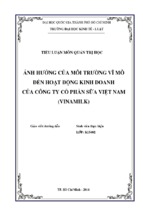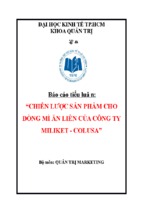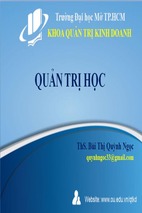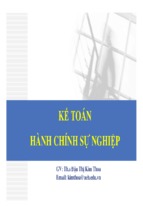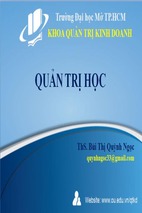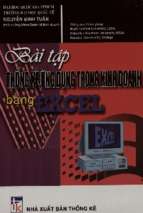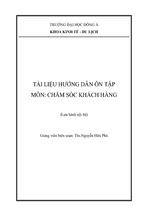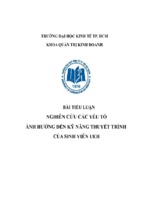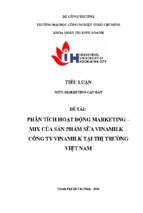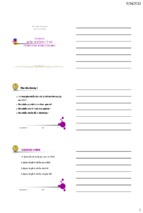310
THE FUTURE OF ePHILANTHROPY
the ideas of fundraising integration came into their own. For a more detailed examination of truly integrated (offline and online) fundraising, the reader should turn to
Chapter 3.
The United Way of New York desperately needed funds to provide service in the
aftermath of the September 11 attacks. The United Way of Toronto wanted to help,
and it found a way through the Tribute to Heroes Telethon. The telethon was simultaneously broadcast in Canada as it went to air in the United States. However, Canadians couldn’t call the 800 number that would appear on the U.S. broadcast. The
United Way of Toronto decided to quickly implement an offline/online solution:
1. Use a Canadian 800 number for Canadians to call in to the United Way of
Toronto donation center.
2. When donors called in, the in-bound telephone volunteers would have a computer
screen with the United Way of Toronto Web site giving form ready to process
the gift.
3. Once the credit card was processed automatically through the Web page, the telephone volunteer would ask for the donor’s e-mail address and tell the donor that
they could receive an electronic tax receipt attached to their e-mail (in Canada,
every donation over $10 must be officially receipted).
In 48 hours, the whole system was set up, over 6,000 online gifts were processed
totaling more than $500,000 (with an average gift of $81) and the majority of the
callers received their tax receipt via e-mail within 24 hours. This was an incredibly
elegant integration of offline and online media.
But even if the creative and integrated approaches and underlying technology are
changing and improving, has the demographic profile of the online donor changed as
well? The only rolling study of online giving in one organization has been conducted
by Greenpeace Canada: three times over a six-year period. In 1998, 2000, and again
in 2002, the organization surveyed, through telephone and e-mail, online donors for
those years (see Exhibit 20.4).
The results of this rolling study show some broad trends:
The predominant position of younger donors in 1998, for this organization, has
fallen in importance.
Middle-aged donors have begun to give in larger numbers.
And finally, older donors, not represented at all in 1998, have become more
comfortable and are giving in larger numbers.
This is only one study, but an intriguing one. It points to a trend that most nonprofit organizations see in online giving—the fact that it’s no longer the domain of
young people, but a medium being adopted by older individuals as well.
To back up the fact that most organizations are finding more and more older online donors, here is another online giving study conducted at the start of 2003 for the
relief organization, Doctors Without Borders (or Medcins Sans Frontieres). A total of
900 online donors (out of 3,000 2002 donors) responded to an online survey (see Exhibit 20.5).
The reader may be a bit surprised by the fact that more than 50 percent of the Doctors Without Borders donors are over 50 years old. But the reader shouldn’t be. As
311
September 11, 2001 and Online Fundraising
Greenpeace Canada Online Donor Profile
65
<35
36-45
46-54
55+
60
Percent
43
40
36
30
29
26
21
21
20
14
8
7
0
1998
2000
2002
Year
EXHIBIT 20.4
The Changing Demographics of Online Donors
middle-aged people and seniors adopt online technologies they become more comfortable with them—perhaps making their first commercial purchases, then philanthropic ones, and finally telling their peers about this effective way to donate.
The Greenpeace and Doctors Without Borders demographic surveys should remind the reader that as nonprofit organizations have been testing and improving their
use of the Internet, there has been a parallel development in the demographic profile
of the online donor. For example, as older donors come online, they demand more stable, more straightforward, less technical interfaces to conduct their business online.
Nonprofit organizations, learning more and more about powerful online tools and
their potential, listen to the demands from customers and ask vendors to deliver a
better online giving product.
If it’s true that a more representative sample of different age subsets have been giving online over the last six years, then how many organizations are they giving to?
Very few studies can show us. An August 2003 study of online donors conducted
by www.canadahelps.org sampled a few hundred nonprofit organizations, ranging
from large to small, from health charities to environment groups to battered woman’s
shelters. It was a broad and shallow survey of online donors who had given in 2003
(see Exhibit 20.6).
The majority of the respondents indicated that they had given online to one or
two charities in the past year. How does that compare to direct-mail donors? A 2003
survey of American and Canadian direct-mail donors conducted by Mal Warwick and
Associates and The FLA Group, found that direct-mail donors gave on average to 10
or more charities.1 So it seems that the online fundraising space is much less cluttered
312
THE FUTURE OF ePHILANTHROPY
Doctors Without Borders Online Donor Profile
Age
2002
Percent
18-29
7.3
30-39
17.2
40-49
20.9
50-59
33.3
60-69
13.6
70-79
5.5
80 or older
2.2
EXHIBIT 20.5
Older Donors Are Becoming an Important Source of Online Gifts
than the offline direct response world. Online donors generally give to between one
and five charities and very few give to more than that.
This may change as the medium matures, but for now, there are less charities competing online for the loyalties of online donors. It might also be true that online donors
aren’t comfortable enough with the medium to give to more than just a few charities.
Not only are readers wondering about the demographic composition of the online donor, they may also be wondering about their technical capabilities. Exactly what
does an online donor understand of the medium—and what kind of connection to the
Internet do they have?
A description of the average online donor and their attitudes can be best understood through a telephone survey conducted by the U.S. fundraising firm, Craver,
Matthews, Smith & Company in October of 2001 (733 donors participated). The
reader can compare it to a similar Canadian study conducted in 2002.2 Some of the
highlights can be seen in the following list:
Broadband access
Online at least 4 years
Online every day
Online banking
Canada
United States
%
71
71
87
70
%
36
73
80
56
The Future of New Technology Fundraising
Charities
313
Percent
1
44.2
2-3
28.6
4-5
16.9
6-10
5.2
more than 10
5.2
EXHIBIT 20.6
Online Donors Still Have Few Divided Loyalties
In both studies, it became clear that younger online donors—individuals in their
thirties—were the biggest e-bankers, with approximately 31 percent of Internet users
aged 30 to 39 using it for this activity.
Therefore, online donor surveys indicate a reasonable proportion of individuals
with high-speed access (this has greatly increased since the 2001 and 2002 surveys)
which means these donors can see content that demands a faster Internet connection.
This means that online donors will have less and less problems viewing online video
appeals.
THE FUTURE OF NEW TECHNOLOGY FUNDRAISING
If you retrace the steps offered in Chapters 1, 2, and 13 about ePhilanthropy and
fundraising strategies, an organization can gather clues about the most effective and
efficient deployment of what new technologies might offer, either tomorrow or even
two years from now.
Will the Web and e-mail be the future of ePhilanthropy? Yes and no. Some of the
elements of ePhilanthropy from the past decade—like e-mail and the Web—will be
reinvented in different formats like SMS text messaging via cellular phones and other
wireless devices.
So let’s take a look at what forward-thinking nonprofit organizations are doing
now. It might just give us a window on the future of ePhilanthropy.
Wireless Devices
In the commercial sector, handheld devices that allow credit cards to be swiped for a
product or service is something that car rental companies and others have been using
for a number of years. Now, the nonprofit sector is investigating the effectiveness of
using wireless devices for donations at events and for public canvassing.
314
THE FUTURE OF ePHILANTHROPY
Nonprofit organizations should seek out the financial services vendors that provide these devices and find out how they can be used to raise money. One such vendor
is Moneris, which can be found at www.moneris.com or www.monerisusa.com.
For Trent University, www.trentuniversity.ca, the rental of a Moneris device allowed their fundraisers to process $60,000 on one machine, in one day, at their convocation. That is one heck of a good return on a $135.00 investment.
Imagine an organization has a special event that includes both silent and live auctions. There could be trained volunteers walking around the event. Staff could not
only take donations but could make sure other financial transactions like auction
purchases are processed immediately.
Though costs vary, an organization should expect to pay approximately the
following:
Credit card transaction fee:
Debit transaction fee:
Terminal pin pad fee:
One-time activation fee:
1.68% (varies slightly)
$0.15 / transaction
$54.00 (wireless) / month
$135.00
In the right location, with the right training, and the right event, a nonprofit could
make thousands and thousands of dollars with a wireless device that can process gifts
immediately.
If more fundraising in the future—whether the first contact is at the mall or
elsewhere—will rely on electronic media for future appeals and correspondence,
then organizations must see electronic media as the sharp end of the stick in communications and stewarding donors. The use of the electronic environment to build
a long-lasting relationship will be vital, and Chapter 12 provides an excellent case study
about why online relationships have to be properly planned, tested, and supported with
both human resources and technology.
E-Stewardship
New technologies can help improve the efficiencies of capturing the first gift and
making sure information about the donor is properly entered into the donor database. The twenty-first century will be the century in which we know more about our
donors—and can manipulate that data to the benefit of both the donor and the nonprofit organization.
By using that data in a structured stewardship cycle, nonprofit organizations will
be truly taking advantage of new technologies to build better relationships online—
and offline.
In many ways, creating an online stewardship plan is a way to make communication as efficient as possible—and free up more time for fundraising staff to spend ‘face
time’ with as many donors as possible. In the future, a nonprofit organization will want
to provide electronic communication to donors in order to do the following:
Improve renewal rates, and/or increase (see Chapter 13) their regular gift in comparison to donors who receive mail and/or phone contact
Allow donors to use viral marketing (see Chapter 6) tools to tell friends and family about the organization they support
Putting It All Together—What Can the Future Hold?
315
Allow donors to use online event tools (see Chapter 14) to participate in other
fundraising activities like a walk or run for the organization they already support
with a regular gift
Allow donors to use online tools to manage their own contact information (see
Chapter 11) and give the organization more accurate contact data
Allow donors to use online advocacy tools (see Chapter 9)
The Cellular Phone
The cellular (or mobile) phone is becoming an important, and convergent, piece of
technology for consumers—and subsequently—nonprofit organizations.
In many parts of the world, the cellular phone is becoming an important communication vehicle for politics, leisure, friends and family, and now, fundraising. They
are also becoming incredibly sophisticated machines: they can receive and take pictures
and video, access e-mail and the Web, and run multiple software programs.
It’s not just for fundraising but a holistic connection of communications, marketing, and fundraising.
Political parties are starting to use text messaging on cellular phones to do a
number of things:
Ask individuals who see a TV ad to enter a series of numbers to agree or disagree
with a position
Ask individuals to enter a number code to donate to the party
After building a list of cell phone numbers—sending text messages immediately
after a TV debate—ask them to vote on the winner or one particular issue from
the debate with instant results
Polling could be done from one phone—even done by the political leader—and
the results instantly sent back and shown to the press
For nonprofit organizations that have advocacy as part of their mission, the instantaneous, broad polling available through cellular phones is an important future possibility.
PUTTING IT ALL TOGETHER—WHAT CAN THE
FUTURE HOLD?
First, it’s most likely going to involve new ways to acquire donors. As the phone and
the mail become less important to the next generation of donors, new acquisition
techniques—like mall fundraising—will appear.
In the mall, fundraisers may be presenting riveting video material on giant
screens—or on handheld computers—engaging interested citizens. When someone is
interesting in giving, the fundraiser will take down the information instantly on a small
computer—and process a credit card or EFT gift—with confirmation within seconds.
Then, they’ll be asked if they’d like to keep in touch during urgent times by sharing
their cellular phone number. That way, the next time a crisis appeal goes out, it arrives
on someone’s cellular phone—a piece of video and a function allowing for instant
donations.
Current technology allows wireless cell-phone video reception and may soon
add wireless disc players with this capability. Think what an organization can do with
316
THE FUTURE OF ePHILANTHROPY
linking live transmissions to individuals or groups via both the Internet, telephone,
and other hand-held devices. How about colleges broadcasting athletic events, lectures, public ceremonies? Or arts organizations’ time-delay interviews with current performers? Or hospitals sharing new medical applications and promoting advanced
healthcare directives? Even small nonprofits can produce CDs (normal size and the
smaller shape) on a variety of topics, program and service-oriented, as well as uses
for marketing, communications, and fundraising purposes.
Of course, this will all require the proper human resources to manage a twentyfirst century campaign, and Chapter 4 does a good job to prepare you for what online
and new technology fundraising will require.
PUTTING THE FUTURE OF ePHILANTHROPY
IN PERSPECTIVE
Over the last 10 years, the pace of technological innovation in fundraising—and especially online fundraising—has been ferocious. It’s going to be difficult to stay on top
of the pace of change.
The author hopes that the final part of this chapter will give some human perspective on ePhilanthropy.
During the early 1970s, running water was installed in the houses of Ibieca, a small
village in northeast Spain. With pipes running directly to their homes, Ibiecans no
longer had to fetch water from the village fountain. Families gradually purchased
washing machines and women stopped gathering to scrub laundry by hand at the
village washbasin.
Arduous tasks were rendered technologically superfluous, but village social life
unexpectedly changed. The public fountain and washbasin, once scenes of vigorous social interaction, became nearly deserted. Men began losing their sense of
familiarity with the children and the donkeys that had once helped them to haul
water. Women stopped congregating at the washbasin to intermix their scrubbing with politically empowering gossip about village life.
In hindsight, the installation of running water helped break down the Ibiecans’
strong bonds—with one another, with their animals, and with the land—that had
knit them together as a community.3
Is this a parable for fundraising in the twenty-first century nonprofit sector? Like
Ibiecans, we seem to acquiesce quietly to seemingly innocuous technological changes.
We adopt more advanced databases, more powerful computers and their networks,
e-mail, and Internet solutions—mostly without question.
Have we thought clearly about the implications of these technologies for our sector and on the constituencies we serve?
If we think that technology can have a profound impact on our sector, then the
pace of technological change should make us pay even more attention. It took more
than 20 years for radio to reach 50 million households in North America—50 million
being a benchmark indicating mass communication maturity. It took just 12 years
for television to reach the same saturation level and only 4 years for the World Wide
Web to do it.
Taking a Harder Look
317
If technological advances are reaching more people, faster, then we need to study
these new technologies more thoroughly in order to decide how to adapt them to the
nonprofit sector.
Are technologies improving the ability of the nonprofit sector to fundraise more
effectively—to better manage donor information and relationships? I would say a cautious yes, but we need to proceed carefully as we invest in new technologies (like an
Internet presence and the further computerization of fundraising).
We need to be aware of something called the Productivity Paradox—a concept
that has emerged out of studies proving that worker productivity since the introduction of computers has either flatlined or declined. It’s also been called the Solow Effect.
With all of the incredible investment in computers we’re still about as productive as
before their introduction. There is one area where we’re much more productive—the
manufacturing of computers themselves.
I know many readers will say that the Productivity Paradox cannot be true
when you consider how computers have allowed your nonprofit organizations to
keep better track of donors, authorize donations, organize files, and communicate
between staff, volunteer, and donors. While all that may be true, computers and their
accompanying technologies can be incredibly difficult to manage and have unintended
consequences.
Now more than ever, we are being challenged by management issues arising from
Internet use in the office. How do we craft an effective privacy policy? How can we
create an e-mail usage policy that respects every worker by keeping management informed but allowing for everyone to fully utilize the Internet? How do we create effective job descriptions and management structures to deal with the introduction of
greater Internet fundraising responsibilities? What does the Productivity Paradox mean
to ePhilanthropy? It reminds us that computers are an incredibly powerful technology
that needs precise and careful management to allow us to do our work more effectively and efficiently.
THE HUMAN MOMENT
Beyond the Productivity Paradox, the author believes there are other reasons for the
nonprofit sector to be cautious about ePhilanthropy and the potent mix of associated
new technologies (which will take forms like wireless, plasma screen, cellular phone,
and mall fundraisers). Studies are beginning to show that the Internet could have detrimental effects on community and the social well-being of citizens. A Carnegie-Mellon
study indicated that people who spend time online exhibited increased levels of depression and loneliness even when only connected a few hours a week.
What this study tells us is that our sector needs to know more about the impact
of these coalescing technologies on our nonprofit organizations and our relationships
with online donors.
TAKING A HARDER LOOK
Although governments, private sector interests, and nonprofits are pouring more
money into new technologies for the sector, there is very little study being done on the
impact of these technologies on online giving.
318
THE FUTURE OF ePHILANTHROPY
Technology philosopher Ursula Franklin, in a recent lecture, mentioned this
possibility:
The Internet will make it easier to give to an earthquake victim half-way around
the world, but it makes it easier to forget about the homeless person on our own
street. Will the Internet dislocate time and space when it comes to our caring for
others in our own community?4
It would be a wise decision by foundations and government bodies to fund studies
of online donors to determine the positive or negative social impact of this new philanthropic endeavor. No data currently exist, and studies would help citizens, nonprofits, and governments to begin to understand the social impact of online giving
now and in the future.
Similarly, we should be studying the impact that the online environment is having
on other parts of the nonprofit organization. Are new technologies creating more stress
within nonprofit organizations? Are they creating dislocation between nonprofits and
the people they serve?
We need answers to these questions as we move forward with these new fundraising technologies. The nonprofit sector is being told to adopt these technologies by
government and business without fully understanding the implications of doing so.
This is also a time of incredible pressure for nonprofit organizations. They are
being asked to do more in an increasingly competitive environment.
In this chapter, there was a reference to the town of Ibieca and its adoption of running water. The reader should wonder if that story could be the parable for the nonprofit sector’s use of online fundraising at the start of the twenty-first century.
ABOUT THE AUTHOR
Michael Johnston, president of HJC, is an expert in fundraising and the use of
the Internet by nonprofit agencies. Mike has worked with more than 100 nonprofit organizations ranging from third-world development organizations, to
hospitals, to peace and disarmament groups, in Canada, the United States, and
the United Kingdom. He gained considerable experience as a senior consultant
and director with Stephen Thomas Associates, one of the first fundraising firms
in Canada to work exclusively with NGOs. He has been a past member of the
ethics committee of the Canadian Society of Fund-Raising Executives (CSFRE)
and was a volunteer fundraising leader with the United Way in its Management
Assistance Program. Mike is also a past board member and current member of
the Association of Fundraising Professionals (AFP) and sits on the AFP’s Volunteer Online Council in Alexandria, Virginia. He has recently joined the board
of directors of the U.S.-based ePhilanthropy Foundation. Mike sits on the executive committee and is the chairman of the product development and education committee.
Endnotes
319
Mike is a skilled communicator, and his skills are known throughout the
nonprofit community. He is the author of The Fund Raiser’s Guide to the Internet and The Nonprofit Guide to the Internet and is the editor of Direct Response Fund Raising, all published by John Wiley & Sons. He has worked with
a range of educational institutions, lecturing on the Internet and the nonprofit
sector and has spoken at five AFP International Conferences, teaching both
full-day seminars and short workshops. From his seminars to television appearances to his published articles, Mike has been able to analyze the implications of the Internet for thousands of people in the nonprofit sector. Michael
Johnston is committed to the nonprofit sector and dedicated to helping organizations reach their charitable goals. You can e-mail Mike at mjohnston@hjcnew
media.com
ENDNOTES
1. The complete survey results can be found at www.theflagroupinc.com.
2. An online survey of 2002 online donors to Amnesty International Canada.
3. Richard E. Sclove, Democracy and Technology (New York: The Guildford Press, 1995),
p. 3.
4. Ursula Franklin, lecture, The Real World of Technology Revisited, Ursula Franklin High
School, May 10, 1999.
- Xem thêm -




